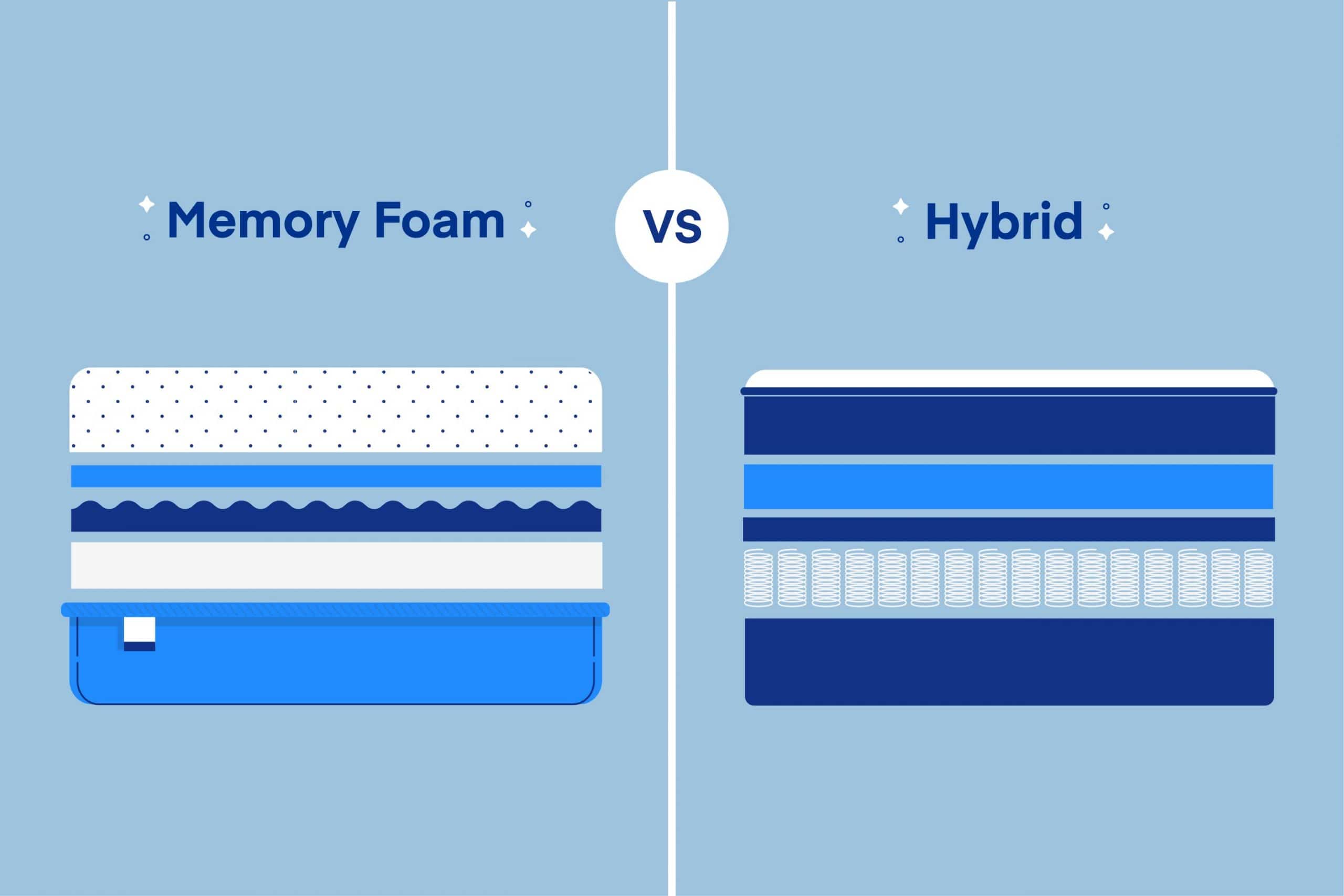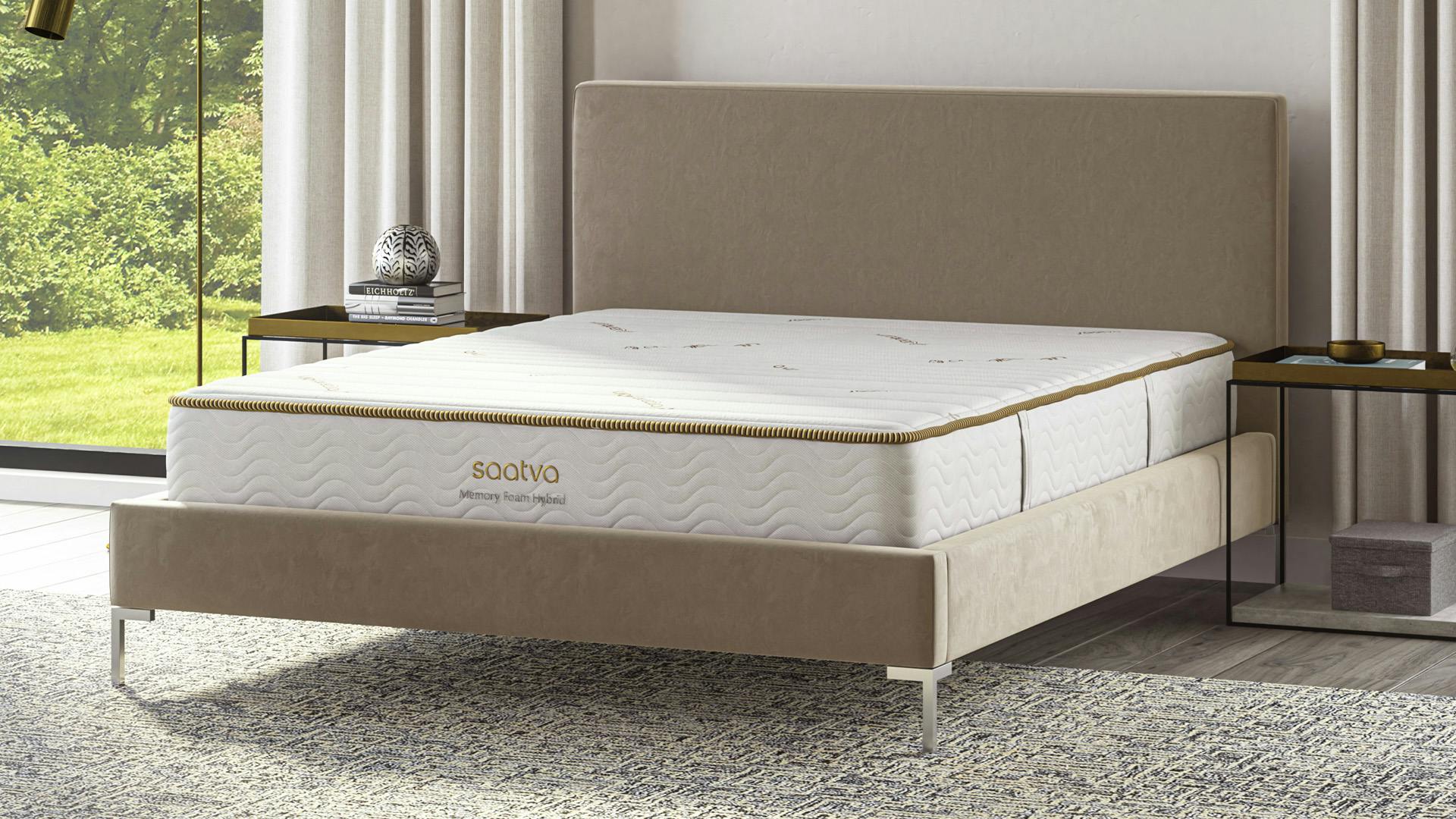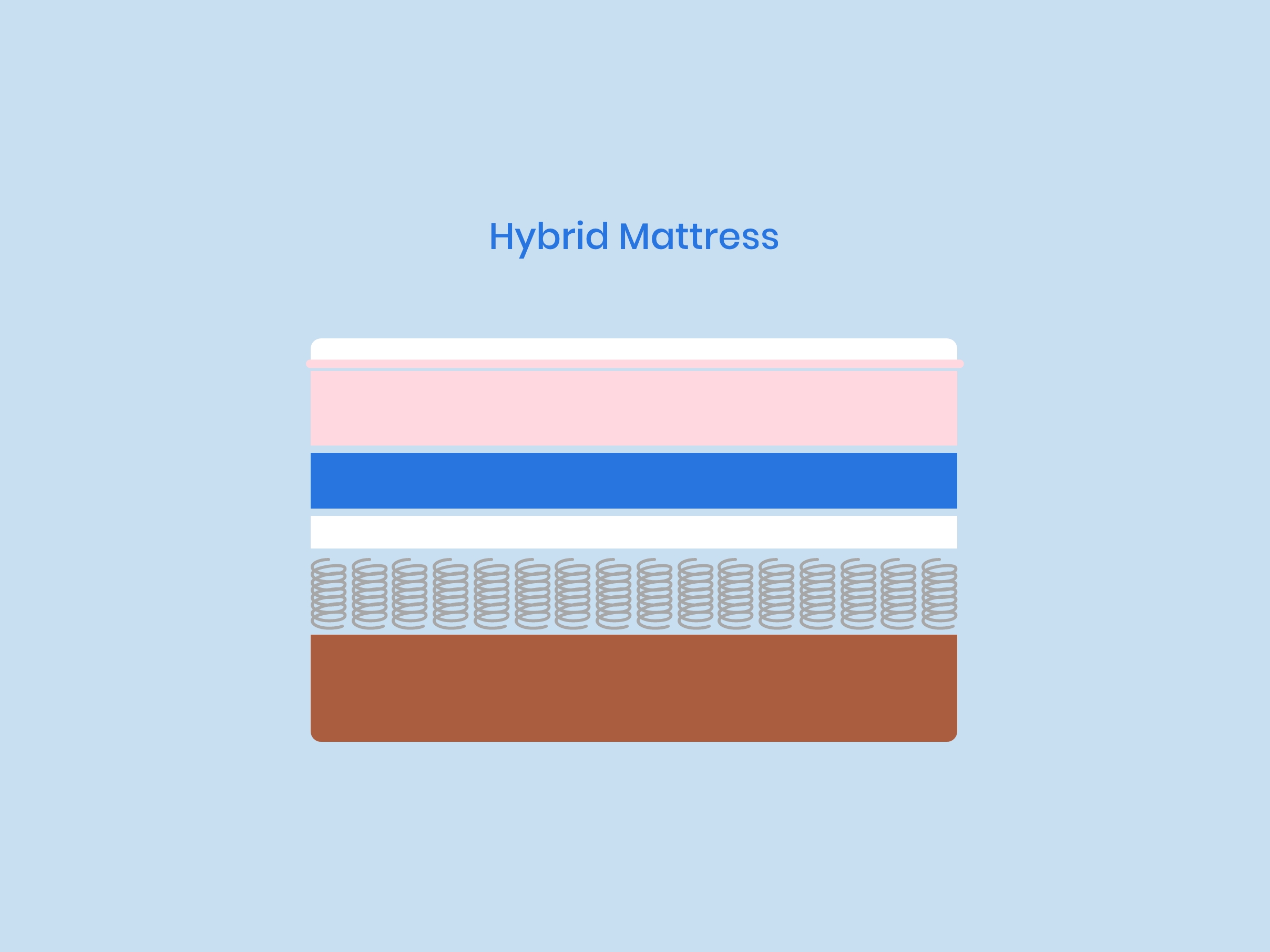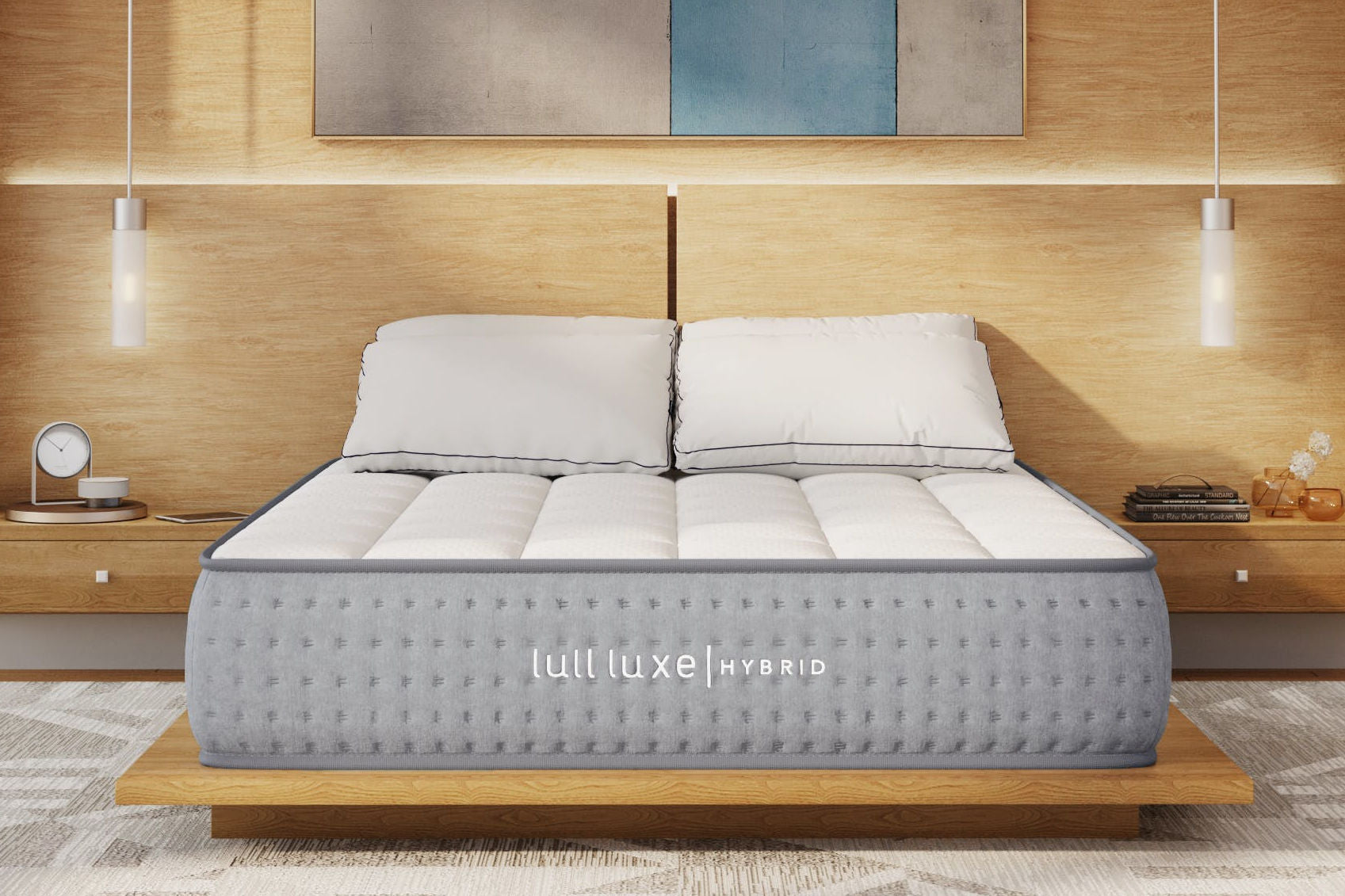Introduction
When it comes to choosing the perfect mattress for a restful night’s sleep, two popular options stand out: hybrid mattresses and memory foam mattresses. Each offers unique features tailored to different sleep preferences and needs. To make an informed decision, it’s essential to understand the key differences between these two mattress types. This in-depth guide delves into their constructions, comfort levels, support, durability, and other factors that influence your sleep experience.

Construction: The Basics
Hybrid Mattresses:
A hybrid mattress, true to its name, combines the best of both worlds – the support of innerspring coils with the comfort layers of foam, including memory foam, latex, or polyfoam. The core typically consists of individually wrapped coils that minimize motion transfer, while the top layers are designed to contour to your body shape. This dual design aims to provide a balance of bounce, support, and pressure relief.
Memory Foam Mattresses:
On the other hand, memory foam mattresses are constructed primarily from viscoelastic foam, known for its ability to conform closely to the body and distribute weight evenly. This material responds to body heat and pressure, gradually molding around sleepers, offering excellent pressure point relief and minimal motion transfer. Some models may include multiple layers of varying density for added comfort and support.
Comfort and Support
Hybrid Mattresses:
Hybrids often provide a more versatile sleeping experience due to their combination of materials. The coil system provides a traditional bounce and better edge support, making it easier to move around and get in and out of bed. The foam layers add a plush feel and pressure relief, particularly beneficial for side sleepers or those with joint pain.
Memory Foam Mattresses:
Memory foam is celebrated for its body-hugging feel, which can be ideal for back and stomach sleepers seeking optimal spinal alignment. It cradles every curve, reducing pressure points and promoting a ‘sink-in’ sensation. However, some users may find memory foam too enveloping, leading to a warmer sleep environment and difficulty changing positions.
Temperature Regulation
Hybrid Mattresses:
With their coil systems promoting airflow, hybrids generally offer better temperature neutrality than all-foam mattresses. The spaces between coils allow air to circulate freely, preventing heat buildup commonly associated with foam mattresses.
Memory Foam Mattresses:
Traditional memory foam mattresses can retain heat due to their dense structure. However, advancements in technology have led to the development of cooling gel-infused foams, open-cell structures, and breathable covers to mitigate this issue, making modern memory foam mattresses cooler than ever.
Durability and Maintenance
Both hybrid and memory foam mattresses are built to last, with quality models offering a lifespan of 7-10 years. Hybrids, due to their robust coil systems, may offer slightly more durability in terms of maintaining shape and support over time. Maintenance requirements are similar; both benefit from using a mattress protector, rotating regularly (though not flipping for hybrids), and avoiding excessive jumping or heavy objects.
Cost and Value
Costs can vary widely depending on brand, materials, and size, but generally, hybrid mattresses tend to be pricier due to their complex construction and use of both foam and coils. Memory foam mattresses, particularly those without advanced cooling features, can be more budget-friendly. However, investing in a mattress that aligns with your sleep needs often proves invaluable for overall health and wellbeing.

Customization and Sleep Styles
One aspect that can sway your decision between a hybrid and memory foam mattress is the level of customization they offer to accommodate different sleep styles:
Hybrid Mattresses:
Given their dual nature, hybrids often come with a broader range of firmness options to cater to various preferences. Sleepers who change positions throughout the night might find the combination of bounce from springs and contouring from foam layers particularly accommodating. Couples with differing sleep needs might also prefer hybrids for their versatility, as they can provide both the support for back and stomach sleepers and the pressure relief for side sleepers.
Memory Foam Mattresses:
While memory foam mattresses might not offer the same degree of firmness variation as hybrids, they excel in providing personalized comfort through body-contouring properties. This makes them especially suitable for individuals who primarily sleep on their sides or those who need extra support for pressure points like hips and shoulders. Many brands now offer memory foam mattresses with zoned support, which means different areas of the mattress have varying densities to enhance spinal alignment and alleviate discomfort.

Environmental Factors and Health Considerations
With growing concerns about sustainability and off-gassing, these factors are increasingly important for consumers:
Hybrid Mattresses:
The environmental impact of a hybrid mattress depends largely on the materials used. Some hybrids incorporate eco-friendly components such as organic cotton covers, natural latex foam layers, or recycled steel coils. However, the manufacturing process of coils and synthetic foams can be resource-intensive. It’s crucial to look for certifications like CertiPUR-US for foam and GOLS for latex to ensure low emissions and responsible production.
Memory Foam Mattresses:
Memory foam mattresses have historically faced criticism for off-gassing—release of volatile organic compounds (VOCs) during unpacking, which can cause temporary odors. Modern manufacturing techniques and the use of plant-based alternatives have significantly reduced these issues. When shopping for memory foam, prioritize brands that use CertiPUR-US certified foams and offer low-VOC products to minimize any potential health impacts and environmental footprint.
Customer Reviews and Trial Periods
Before committing to a mattress, delve into customer reviews to gain insights from real-world experiences. Look for common themes regarding comfort, durability, and any potential drawbacks. Many companies now offer generous trial periods, usually ranging from 90 days to a year, allowing you to test the mattress in your own home. Take advantage of this period to assess whether the mattress meets your expectations and supports your best sleep.

Conclusion: Choosing Your Perfect Mattress
Ultimately, the decision between a hybrid and memory foam mattress rests on personal preferences regarding firmness, support, temperature regulation, and budget. If you’re looking for a balance of bounce and contouring with enhanced edge support, a hybrid might be your best bet. Conversely, if you prioritize deep pressure relief, motion isolation, and a classic ‘hugging’ feel, a memory foam mattress could be ideal. Whichever you choose, take advantage of trial periods offered by many manufacturers to ensure your selection truly delivers the ultimate sleep comfort you deserve.

